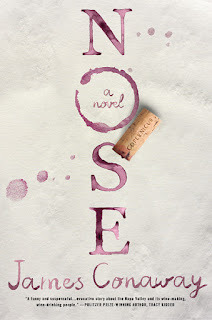Threatening grizzlies
April 28, 2016
Doug Peacock is a well-known naturalist, writer, friend, and longtime student of the bear. The inspiration behind the character Heyduke in Edward Abbey's novel, The Monkey Wrench Gang, he divides his time between western Montana and the Arizona desert.
(See: http://cjonwine.blogspot.com/2014/04/lighting-out-for-territories-3-sleeping.html)
(See: http://cjonwine.blogspot.com/2014/04/lighting-out-for-territories-3-sleeping.html)
April 28, 2016
The President
The White House
1600 Pennsylvania Avenue
Washington, D.C. 20500
Dear President Obama:
We are writing to thank you for your leadership on climate change and to ask for your help: Yellowstone grizzly bears are in grave danger.
Your administration has regrettably taken steps to strip the bear’s federal protections under the Endangered Species Act (ESA), opening up a grizzly bear trophy hunt on the edges of Yellowstone National Park. Yellowstone’s bears are a remnant and isolated population. They must be allowed to wander safely outside of Yellowstone National Park.
Americans would never accept hunting of America’s bald eagle; hunting Yellowstone grizzly bears is equally unacceptable.
To make matters worse, America’s great bears face the same looming threats as many species across the country due to climate change. In the last decade, climate change has decimated the Yellowstone grizzly’s most important food, the white bark pine nut.
Unfortunately, the March 3, 2016, delisting announcement by the U.S. Fish and Wildlife Service (FWS) came paired with an astonishing declaration in the Federal Register: “Therefore, we conclude that the effects of climate change do not constitute a threat to the [Yellowstone grizzly bear population] now, nor are they anticipated to in the future.”
This statement is even more disturbing in light of your administration’s commitment to addressing climate change, because climate change predictions are dire for all our planet’s species. How can it be that the military considers climate change in all its decisions, while the agency responsible for our wildlife, the FWS, does not?
The same argument – the denial of climate change – was used by the FWS in 2014 to deny listing the wolverine in the lower 48 states. On April 4, 2016, that decision was reversed in federal court, and declared “arbitrary and capricious.” The FWS was ordered to reconsider its reasoning about climate change. It’s now time for this federal agency to play catch up and use “the best available science” to keep grizzly bears on the ESA list.
A critical question: Who benefits from delisting Yellowstone’s grizzly bears? The only certain outcome of delisting bears will be trophy hunts in Idaho, Montana and Wyoming.
We ask you to instruct our federal wildlife managers to withdraw the March 3 rule and order the FWS to take another look at how climate change impacts grizzly bears. Any decision about the bear’s future should be put on hold until independent scientific review can explore potential impacts to bears from climate change. We strongly suspect that America’s great bears face a dire future, even with the continued protection of the Endangered Species Act.
Respectfully yours,
Doug Peacock
Author, Guggenheim Fellow
Concerned scientists:
Professor Edward O. Wilson, Harvard University, Museum of Comparative Zoology
George B. Schaller, Panthera Corporation and Wildlife Conservation Society
Jane Goodall, Jane Goodall Institute and UN Messenger of Peace
Michael Soule, Professor Emeritus, Univ. of California, Santa Cruz
Citizens of the Yellowstone ecosystem:
Jeff Bridges, Academy Award-winning actor
Yvon Chouinard, Founder of Patagonia, Inc.
Michael Finley, Former superintendent Yellowstone National Park
Carl Hiaasen, Journalist, author
Michael Keaton, Academy Award-winning actor
Tom McGuane, American Academy of Arts & Letters
N. Scott Momaday, Pulitzer Prize winner
Terry Tempest Williams, Author and Guggenheim Fellow
















